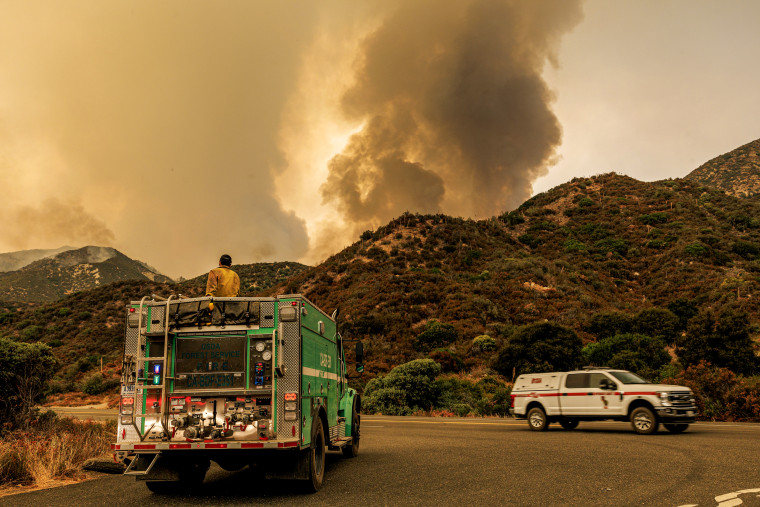The U.S. Forest Service says it will not hire seasonal employees in the next fiscal year because of expected cuts to its budget, just as fire seasons grow longer, hotter and deadlier.
Rank-and-file employees and union representatives have warned for years that low pay is leading firefighters to find employment elsewhere, contributing to high attrition rates that leave national forests more susceptible to wildfires.
“We’re losing a lot of the most experienced people right now, and there’s no incentive to replace them,” said Andy Vanderheuel, a spokesman for the National Federation of Federal Employees, a union that represents federal firefighters, referring to financial struggles within the agency.
The lack of seasonal hires next year will not affect the agency’s ability to respond to wildfires, officials said, but it could affect trail maintenance, fisheries, recreation services, engineering and surveying.
The Forest Service, which declined to say how much its budget is expected to shrink in fiscal year 2025, is pre-emptively tightening its belt and telling regional directors to plan for less spending.
“As an agency, we have a responsibility to plan for the most conservative funding picture, and these actions reflect that reality,” Forest Service spokesperson Scott Owen said in a statement.

Congress is expected to vote soon on a stopgap spending bill that would prevent a government shutdown.
Forest Service Chief Randy Moore told employees last week in a private meeting that the agency’s financial prospects will look different from “how we have been operating the last couple of years.”
“We’ll have to think differently how we do our work,” Moore said.
In March, the Forest Service asked for $8.9 billion for the coming fiscal year, an increase of $658.5 million over the previous fiscal year, according to the latest budget justification report.
But agency leaders do not expect to get anywhere near that amount.
“We’re doing what we can with what we can get,” Moore said.
Isaac Karuzas, a union steward in Montana, said he began seeing changes midway through the fire season, when only half the positions on his stepdaughters’ Idaho-based hand crew were filled.
“We’re down a significant percentage of firefighters across the board, and then to just take more away, you know, when we’re still in fire season, it’s kind of a tough blow to everybody,” he said. “Your morale goes down.”
A fire season typically runs from July to October but increasingly lasts through November.
The agency hired about 4,000 new employees in recent years, bolstered by a $20,000, or 50%, retention bonus that was paid for by the Infrastructure Investment and Jobs Act in 2021.
In 2023, federal workers, including firefighters, received a round of raises under an order signed by President Joe Biden.
Forest Service Budget Director Mark Lichtenstein suggested in last week’s employee meeting that the federal government might have overcommitted funds.
“While that’s great for our employees, Congress, unfortunately, didn’t necessarily provide all the funding necessary to pay for it,” Lichtenstein said.
Some regions will have the discretion to hire additional employees for critical positions, like avalanche crews, said Jacqueline Buchanan, a forester for the Pacific Northwest Region, which includes nearly 25 million acres of public lands in Oregon and Washington.
“Right now, we’re in a place we haven’t been, where we’ve had this much of an anticipated shortage, and so it feels far more dramatic,” she said. “Where we are focusing and where we need to maintain is our fire readiness.”

Leave a Reply